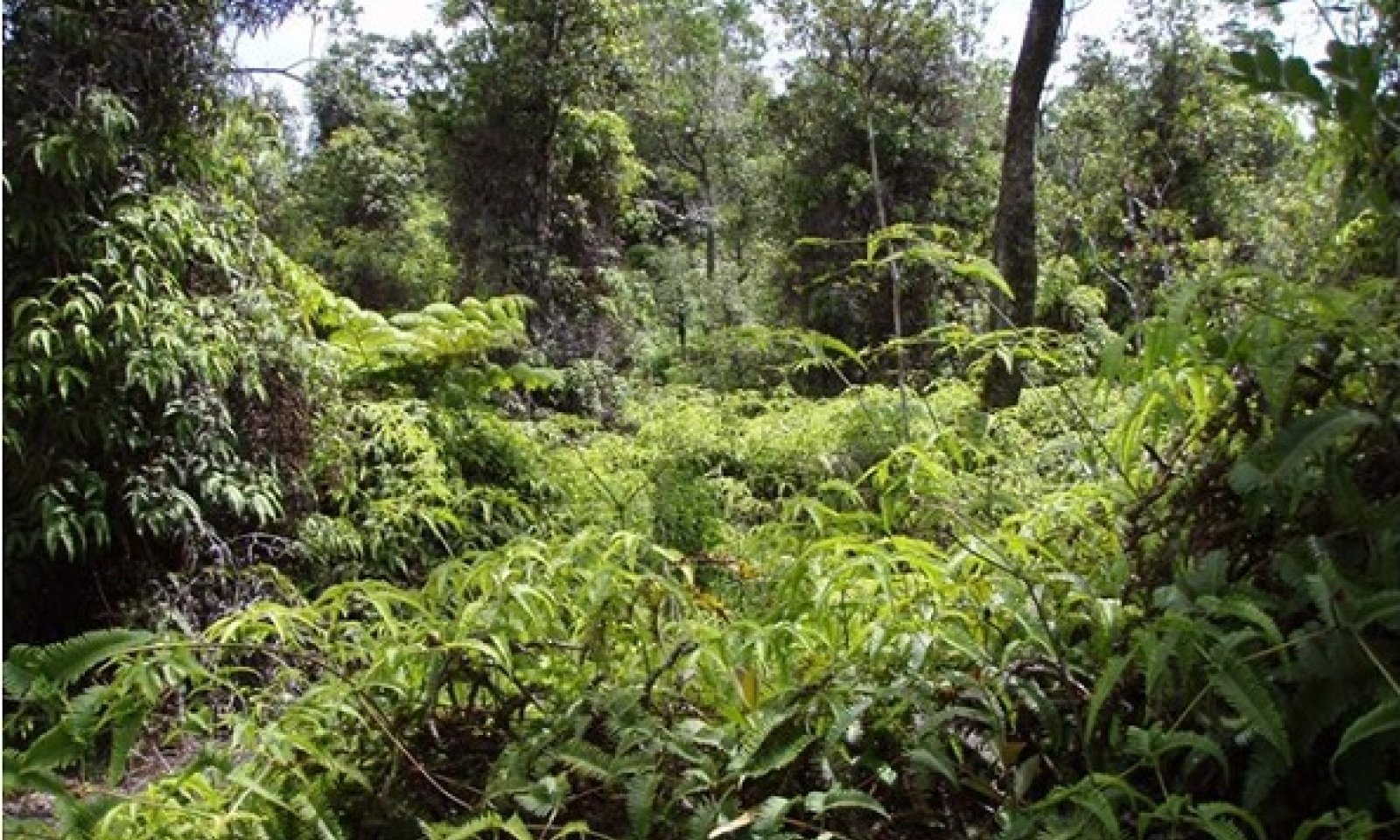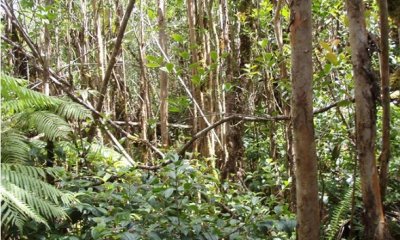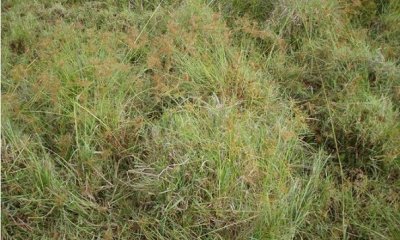
Moderately Well Drained Perudic Forest
Scenario model
Current ecosystem state
Select a state
Management practices/drivers
Select a transition or restoration pathway
- Transition T1A More details
- Transition T1B More details
- Restoration pathway R2A More details
- Restoration pathway R2B More details
- Restoration pathway R3A More details
- Transition T3A More details
-
No transition or restoration pathway between the selected states has been described
Target ecosystem state
Select a state
State 1
Reference State






Description
The Reference State consists of one plant community. Under a regime of natural disturbances, this community has probably been fairly stable through post-glacial time frames with the exception of hypothesized soil changes discussed in Ecological Dynamics of the Site.
State 1 can transition into State 2, Invaded State, by clearing and abandonment or by gradual weed invasion, which is exacerbated by feral ungulates. It will transition into State 3, Naturalized Grassland State, by active clearing by humans or by heavy foraging over time by ungulates.
Submodel
State 2
Invaded State







Description
This state is comprised of one plant community dominated by introduced species in both the overstory and understory. Understory vegetation usually is very sparse to nonexistent. Remnant individuals of a few native species may persist. This state might be considered a dead end as far as further succession or transition to another state. Restoration to a facsimile of the Reference State could probably be done with expensive and intensive practices followed by long-term weed management.
This state arises through gradual invasion by introduced species of intact native forest (the Reference State) or by rapid invasion by introduced species of cleared and abandoned sites. Native species are unable to regenerate in the shady, highly competitive stands of introduced plants and eventually die out.
Disturbance of the soil and direct damage to native understory plants by introduced ungulates, particularly pigs and cattle, will speed the transition to this state by killing native plants and by creating germination sites for introduced species.
Restoration to the Reference State or a facsimile of it is possible by installing pig-proof fence, removing all ungulates, applying herbicides, and replanting native species when needed. Restoration efforts will be affected depending on the degree of invasion by introduced species and by the particular species that have invaded the site. Long term weed management and fence maintenance will be necessary.
Submodel
Description
This state is comprised of one community phase consisting of some desirable forage with a preponderance of less desirable species. This state often occurs in patches within ecological site F159AY500 where moderately well drained Akaka soils occur in low spots of map units consisting mostly of well drained soils in grazed areas at lower elevations.
Submodel
Mechanism
The Reference state can transition to State 2, Invaded State, by gradual invasion by alien trees, shrubs, and grasses that outcompete native plant species and inhibit their reproduction. This process is accelerated by ungulate foraging that enhances weed germination by disturbance of the soil surface and by directly destroying native plants.
Mechanism
The Reference State can transition to State 3, Naturalized Grassland State, by clearing the forest with heavy machinery and planting or allowing invasion by pasture species. Native forest may be cleared gradually by allowing feral or domestic cattle uncontrolled access to the forest. Cattle eventually eat or destroy understory ferns, forbs, shrubs, and saplings, opening up the forest so that pasture grasses will thrive.
Mechanism
Restoration to the Reference State may be possible where excessive soil erosion has not occurred. Propagation and/or relocation of uluhe fern to sites from which it has disappeared is difficult. Remnant uluhe should be protected and encouraged to spread. Natural propagation of uluhe on small, mossy logs placed under uluhe stands is possible; these logs can then be relocated to restoration sites.
Before restoration of native plants, invasive plants must be eliminated by herbicide weed control and brush management practices. Also, feral and domestic ungulates must be excluded from the restoration site by a fence, and any remaining ungulates within the fenced site must be eliminated. If feral pigs are present, an intensive, short-term program must be employed to eliminate their population; otherwise, their rate of increase will outpace control efforts.
Key native plant species that have been eliminated or greatly reduced in numbers generally must be restored by replanting. Long-term maintenance of the site using herbicides, hand-weeding, mulching, and fence repair is required.
Mechanism
State 2, Invaded State, may be restored to State 3, Naturalized Grassland, by mechanical clearing of overstory and understory vegetation followed by herbicide control of reemerging invasive species. Introduced grasses may then be seeded or sprigged into the site. Herbicide applications, mowing, and careful grazing practices will be necessary during and after pasture establishment to control reemerging weed species.
Mechanism
It may be possible to restore State 3, Naturalized Grassland State, to a plant community resembling State 1, Reference State, by intensive restoration practices followed by long-term maintenance. Control of grasses and any weeds currently in the grassland by mowing, herbicides, and mulch must precede establishment of native species. Weed control would be a long-term process to maintain the site during and after establishment. Many weeds are shade-tolerant and would be able to invade the site even after establishment of native plants. Domestic and feral ungulates must be fenced out of the restoration site. However, managed grazing by domestic ungulates outside the fence would be useful to manage weedy vegetation outside the perimeter.
Reestablishment of uluhe fern thickets would be essential to any restoration attempt. Remnant uluhe must be preserved the site. Uluhe fern is difficult to propagate and relocate to sites from which it is absent. It is possible to naturally propagate uluhe by placing mossed-covered pieces of tree wood beneath uluhe thickets; then move them to the restoration site.
Model keys
Briefcase
Add ecological sites and Major Land Resource Areas to your briefcase by clicking on the briefcase (![]() ) icon wherever it occurs. Drag and drop items to reorder. Cookies are used to store briefcase items between browsing sessions. Because of this, the number of items that can be added to your briefcase is limited, and briefcase items added on one device and browser cannot be accessed from another device or browser. Users who do not wish to place cookies on their devices should not use the briefcase tool. Briefcase cookies serve no other purpose than described here and are deleted whenever browsing history is cleared.
) icon wherever it occurs. Drag and drop items to reorder. Cookies are used to store briefcase items between browsing sessions. Because of this, the number of items that can be added to your briefcase is limited, and briefcase items added on one device and browser cannot be accessed from another device or browser. Users who do not wish to place cookies on their devices should not use the briefcase tool. Briefcase cookies serve no other purpose than described here and are deleted whenever browsing history is cleared.
Ecological sites
Major Land Resource Areas
The Ecosystem Dynamics Interpretive Tool is an information system framework developed by the USDA-ARS Jornada Experimental Range, USDA Natural Resources Conservation Service, and New Mexico State University.



